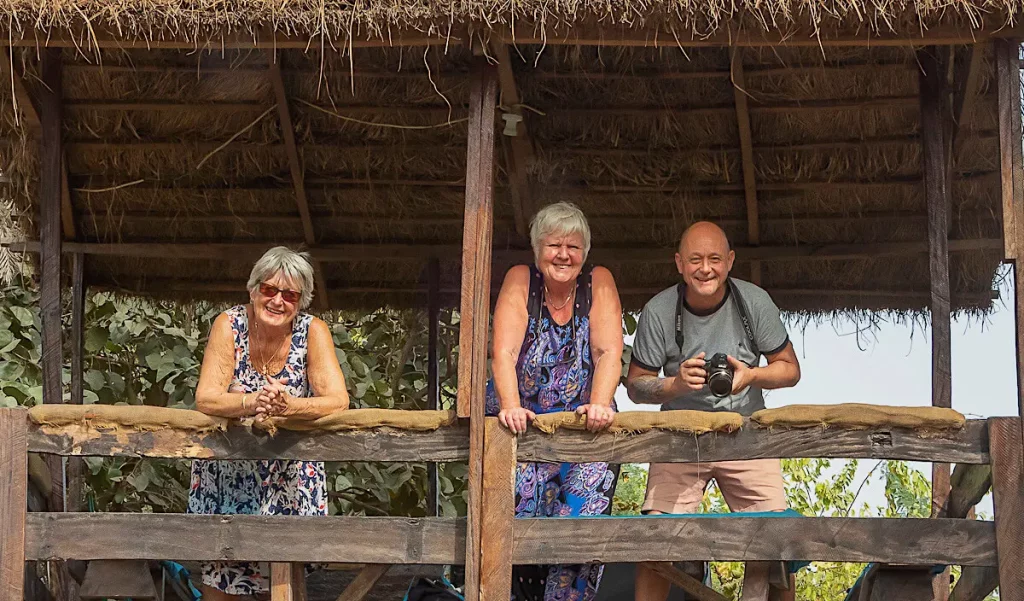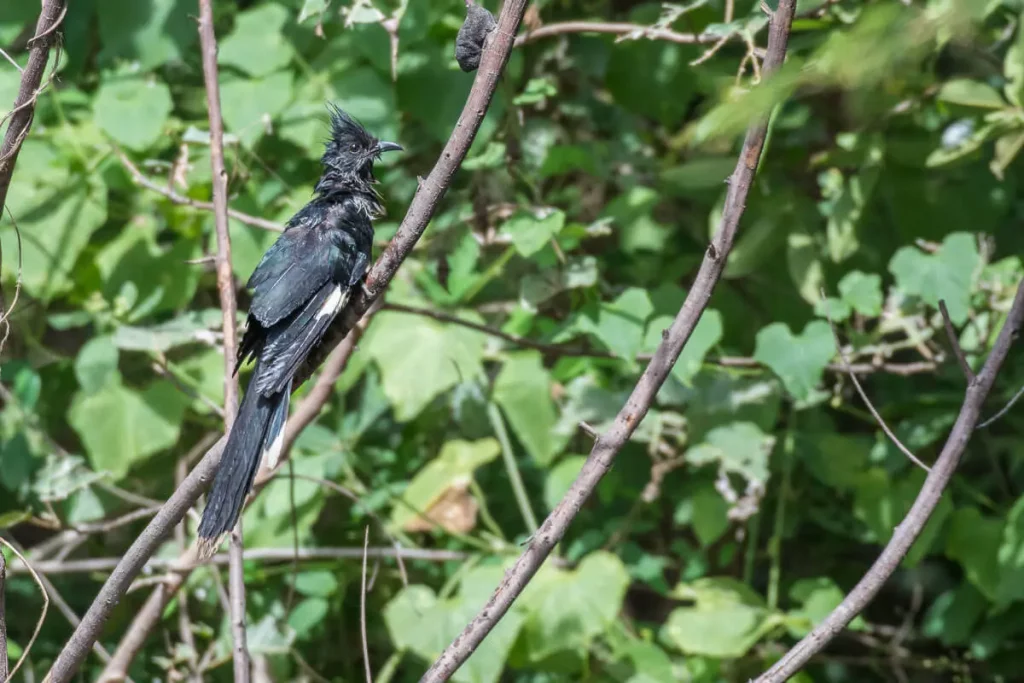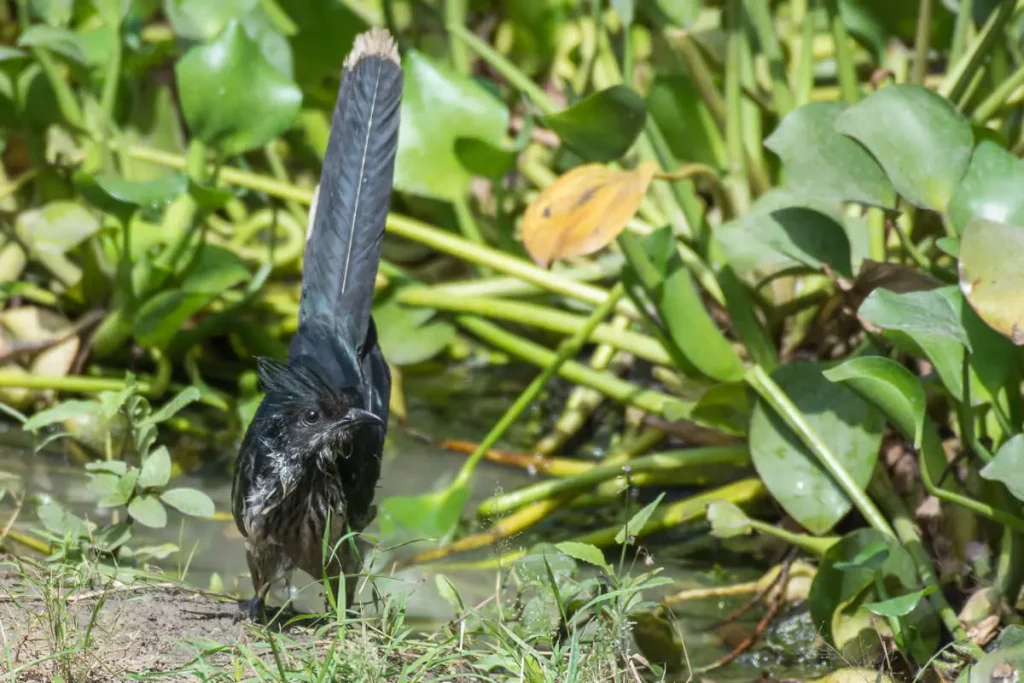Levaillants Cuckoo pictured below at our purpose-built pool. Not only is the pool now well established but also you would not know it was man-made. A wide variety of birds frequent it each day.
Because the hide is elevated and roofed you get great photos and are cool and comfortable while taking them.
Where can we find Levaillants Cuckoo?
As mentioned earlier, this bird is a daily visitor to our water feature.
They are residents in much of Sub-Saharan Africa.
In Gambia for example this delightful bird is widespread and also generally fairly common in forest interiors and bush.
What does it look like?
Quite a large bird at 37 cm long, it has a heavily streaked throat. There are two colour morphs. The light morph is black above, faintly glossed bluish or greenish. The throat streaking may extend on to the sides. The primaries and rectrix tips are white. The dark morph is black except for the white primary patch and white spots on the outer tail feathers (these are absent in dark pied cuckoo. The juvenile Levaillant’s cuckoo is brown above, rufous on the wing-coverts and rectrix tips, with a buff forehead, face and underparts, and the throat more streaked. Source Wikipedia
What does it feed on?
Eats mainly caterpillars, and sometimes other insects or maybe fruit.
Want to know an interesting Factoid?
These Cuckoos are what’s known as a Brood parasites. They rely on others to raise their young. It’s common among birds, insects, and fish. The brood parasite manipulates a host, either of the same or of another species, to raise its young as if it were its own, using brood mimicry, for example by having eggs that resemble the host’s (egg mimicry). Source Wikipedia
How does it sound?
Its call is a low resonant Kuwu-weer, Kuwu-weer with an elevated Ku-wi-wi-wi.



